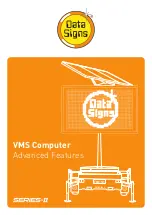
i nte r pretat io n o f a le rt s
Radar Alerts
The alerts provided by your unit are affected both by the type
of transmission (continuous wave or instant-on), and the
position of the Radar source. These critera hold true whether
you are traveling in or outside of North America. Generally,
when you drive closer to a Radar source, the intensity of the
received signal increases, resulting in the increase of the
number of bar graph segments as well as numerical digit
[
1–9]
and a corresponding increase in the audio alert rate.
Described below are five common types of Radar encounters
and the alerts you will typically receive.
1
.
Stationary or moving Radar, straight ahead aimed in your
direction.
Since Radar signals travel in a straight line, this Radar
encounter potentially offers maximum warning range. Once
the signal is received, the initial warning consists of an X, K or
Super Wideband Ka audio alert coupled with simultaneous
identification of the Radar band (X, K or Ka) and signal
strength in the Text Display. The number of bar graph segments
displayed depends upon the strength of the signal received. As
the strength of the Radar signal increases, the audio alert
becomes more rapid and the bar graph will display the
maximum number of five segments and the digit “
9
” will also
appear indicating maximum signal strength. Assuming the
Radar signal remains uninterrupted, the audible and visual
alerts will clearly indicate a “weak” signal becoming stronger














































